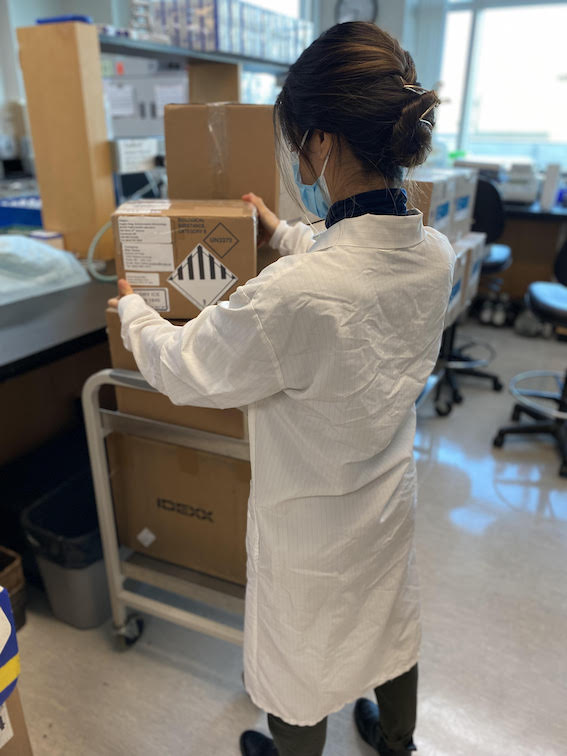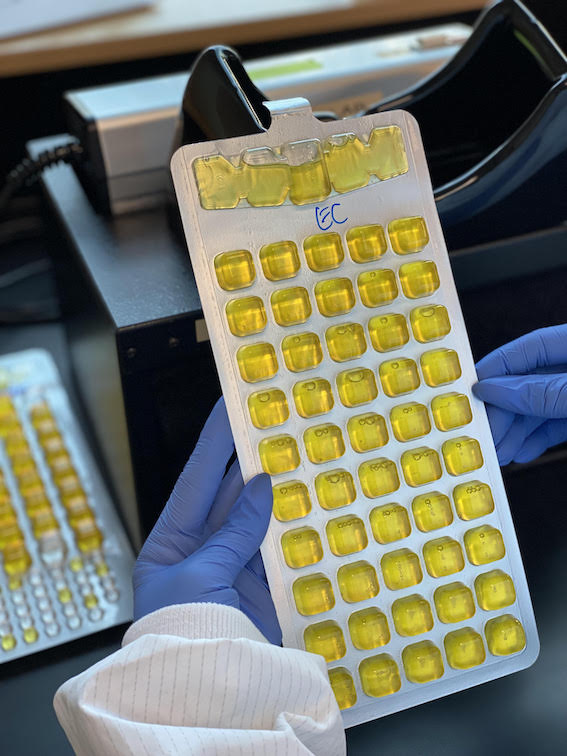Safe drinking water is an essential of everyday life, something that many of us take for granted because we live in a province with some of the best quality drinking water in the world.
But with the recent extreme rainfall and flooding that's taken place in southwestern BC over the last 10 days, water testing, and the logistics of doing it within the regulations of the
BC Drinking Water Protection Act (DWPA), have become challenging for a host of communities such as Hope and beyond up the Fraser Canyon.
Under the DWPA, water must be tested in less than 30 hours from the time of a sample being collected. Under normal circumstances, this process is a simple one involving couriers and regular delivery companies to get samples from communities to the BC Centre for Disease Control Public Health Laboratory in Vancouver.
With the condition of roads and highways out to the Fraser Valley and beyond, these regular delivery channels can't be relied upon right now, putting in doubt the reliability of water supplies for thousands of people in these communities that are already hit hard by the extreme rainfall.
 “It's officially called POUT (Point of Use Testing) but we've taken to calling it Lab in a Box," says Natalie Prystajecky, BCCDC Public Health Laboratory Program Head of Environmental Microbiology. The idea behind Lab in a Box?
“It's officially called POUT (Point of Use Testing) but we've taken to calling it Lab in a Box," says Natalie Prystajecky, BCCDC Public Health Laboratory Program Head of Environmental Microbiology. The idea behind Lab in a Box?
“In times of crisis like we're experiencing in the region right now, we need to enable staff who work at a utility like the Hope Regional District to be able to sample and test their water daily for total coliforms and E coli without transport to the BCCDC." – Natalie Prystajecky
Similar to the logistical challenges facing the water samples, getting the supplies needed to test water samples to the Hope facility is also a big challenge right now.
“In general, getting the supplies to do this kind of microbiological testing has been a real issue, especially with the current supply chain and logistical challenges," says Christine Tchao, BCCDC Environmental Microbiology Team Lead.
From pallets of sampling bottles to containers of reagents and ultraviolet lights, there are a number of key items needed to do proper testing, particularly in a non-lab setting. And having the testing done on site involves more than just getting the materials shipped from across the continent in a timely fashion.
 “There's a significant training component to all of this," says Christine. “Which has been made more difficult by intermittent internet access and potential power outages at the Hope facility, two things we often take for granted but that can't be taken relied upon in an emergency or disaster.
“There's a significant training component to all of this," says Christine. “Which has been made more difficult by intermittent internet access and potential power outages at the Hope facility, two things we often take for granted but that can't be taken relied upon in an emergency or disaster.
“We've wound up using telephone calls for the majority of this," explains Christine. “It's been an excellent learning and training experience, helping us realize what we need in order to deploy this type of program in the future."
The problem-solving required to make this kind of solution happen in a hurry required strong support from key partners such as Fraser Health Protection staff and the Provincial Drinking Water Officer, Joanne Edwards.
“It's been impressive how the BCCDC Public Health Lab, Fraser Health and the District of Hope have been able to pivot to make emergency point-of-use-testing a possibility in an area that has had its transportation networks so severely impacted from the recent devastating atmospheric weather events, says Joanne.
“I look forward to seeing how this service unfolds and what we learn from the experience." – Joanne Edwards
Fraser Health Authority Health Protection Manager, Alex Kwan, agrees the collaboration has been exceptional stating, “As we learn to adapt to these changing times we appreciate the work done by the BCCDC, the Ministry of Health and the willingness of the operators at the District of Hope to take on this new responsibility, providing continuity of testing during such an important time."
The concept for the POUT kits that have been prepared and delivered this past week has been under discussion for some time now, particularly at times when there's been challenges getting samples tested for remote communities on a timely basis over the years.
The onset of the pandemic put much of that exploratory work on hold when workloads skyrocketed for so many. But without that preparatory work, it would have been extremely difficult to deliver this week's solution in the time it was needed.
“There are a lot of considerations around this kind of testing," says Natalie. “But we're all thrilled to be able to make it happen for those people that have been so badly affected."
